
CAE Software【Femtet】Murata Software Co., Ltd.

Example2 Parallel-Plate Dielectric Capacitor
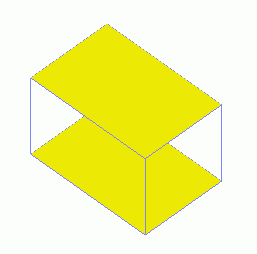
General
-
The capacitor analyzed in this exercise consists of two parallel conductive plates with an alumina block placed between them.
-
The capacitance, the electric field, and the equipotential map are solved.
-
Unless specified in the list below, the default conditions will be applied.
Analysis Space
|
Item |
Settings |
|
Analysis Space |
3D |
|
Model unit |
mm |
Analysis Conditions
Select “Static analysis” as the potential is static.
|
Item |
Settings |
|
Solvers |
Electric Field Analysis [Coulomb] |
|
Analysis Type |
Static analysis |
|
Material Type |
Dielectric material |
|
Options |
N/A |
The electric field exists outside the analysis domain. Therefore the open boundary condition below is applied initially.
|
Tab |
Setting Item |
Settings |
|
Open Boundary Tab |
Type |
Absorbing boundary |
|
Order of Absorbing Boundary |
1st degree |
Model
Create a cubic solid body for the dielectric capacitor.
Set the boundary condition of the voltage on the top and bottom faces of the capacitor.
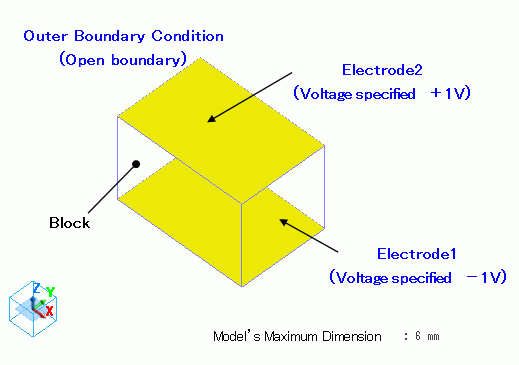
Body Attributes and Materials
A block of alumina is defined.
|
Body Number/Type |
Body Attribute Name |
Material Name |
|
1/Solid |
Block |
001_Alumina * |
* Available from the Material DB
Boundary Conditions
|
Boundary Condition Name/Topology |
Tab |
Boundary Condition Type |
Settings |
|
Electrode1/Face |
Electric |
Electric wall |
Voltage specified, -1[V] |
|
Electrode2/Face |
Electric |
Electric wall |
Voltage specified, +1[V] |
|
Outer Boundary Condition * |
Electric |
Open boundary |
|
To set Outer Boundary Condition, go to the [Model] tab

and click [Outer Boundary Condition] ![]() .
.
Results
To see the calculation results, go to the [Results] tab

and click [Table] ![]() .
.
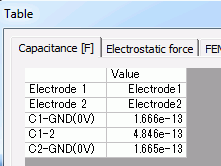
The vectors of the electric field are shown below.
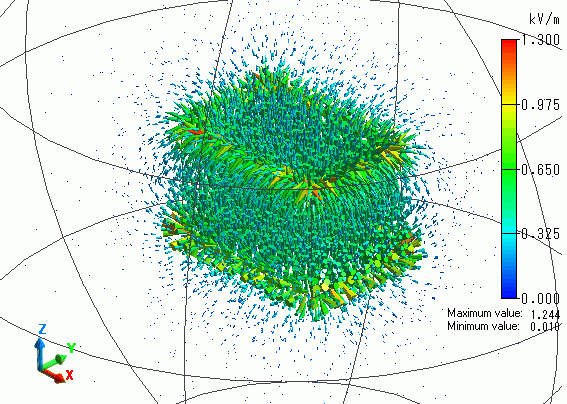
The electric field is generated between two electrodes.
The vectors of the electric flux density are shown below.
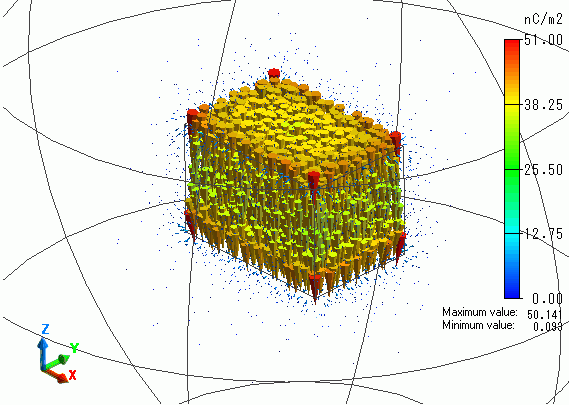
The electric flux density is concentrated in the alumina block.

